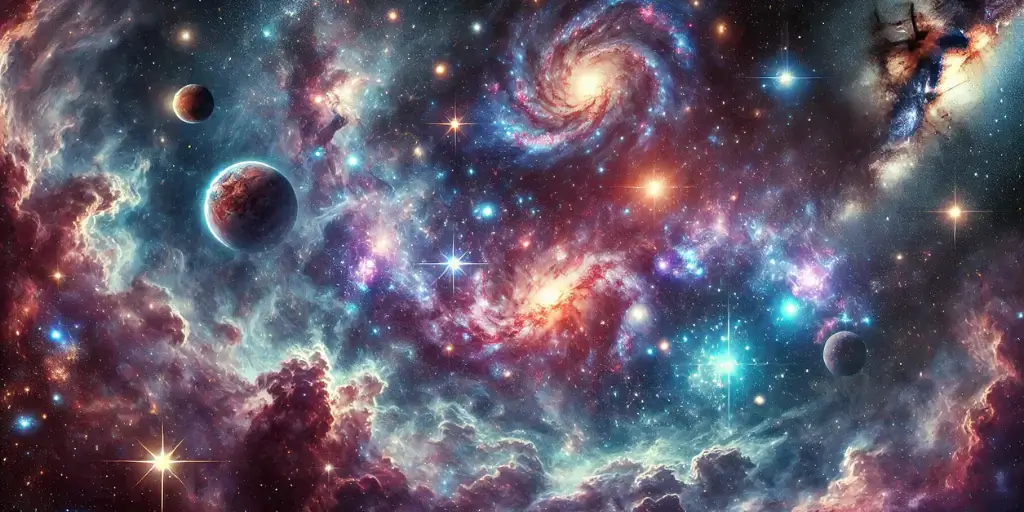Recently updated on January 11th, 2025 at 03:48 pm
One of the most amazing scientific tales is the genesis of the Earth, a voyage spanning billions of years and including complex chemical reactions, swirling gases, and catastrophic cosmic events.
When we understand how our planet began, we can better appreciate Earth and the enormous, interrelated processes that control the cosmos. Here’s a closer look at Earth’s creation, from its beginnings in the stars to its sophisticated, habitable world today.
1. A Stellar Origin: The Solar System’s Formation
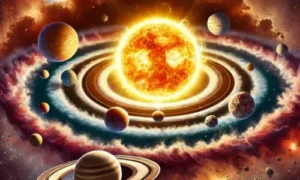
Our journey starts in a huge cloud of gas and dust called a solar nebula about 4.6 billion years ago. Hydrogen, helium, and heavier elements produced by old stars made up most of this nebula, which is situated in a peaceful region of the Milky Way. Parts of this nebula gradually started to collapse under their gravity, maybe due to a nearby supernova explosion, creating a spinning, flattened disk with a hot, dense core.
Our Sun, the enormous star holding the solar system with its gravitational pull, was finally formed at the centre of this spinning disk. Dust and gas particles clashed, bonded, and progressively expanded into larger clusters around the young Sun. Over millions of years, these tiny particles kept coming together to form planetesimals, the foundational units of planets.
2. The Earth’s Formation by Accretion

Clusters of ice, metal, and rock fused as the solar nebula continued to rotate because of gravity. Proto-planets were gradually formed due to this process, which is called accretion. The high temperatures close to the Sun prevented ice from forming, which promoted the development of stony planets in the area where Earth would eventually originate.
The Earth was once one of these expanding proto-planets, primarily made of silicate rock and metals like nickel and iron. Earth’s size increased over millions of years due to collisions with other planetesimals and tiny debris. Large volumes of heat were generated by these occasionally extremely violent collisions, melting the young Earth and causing heavier elements to sink toward the centre while lighter materials floated to the top.
Eventually, a fully formed Earth with a layered structure was produced by this era of accretion and tremendous bombardment. Lighter silicates formed the Earth’s crust and mantle, laying the groundwork for subsequent surface changes, while the densest minerals settled to form the core.
3. The Moon’s Formation
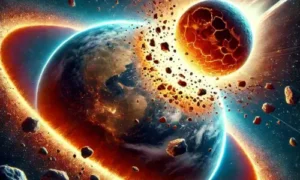
The large impact hypothesis, which postulates that an object the size of Mars, sometimes referred to as Theia, crashed with the early Earth, was one of the most important events in Earth’s formation. Debris from this enormous impact was launched into Earth’s orbit, where some of it later came together to form the Moon.
The Moon’s development had a significant impact on Earth as well. For the long-term stability of Earth’s climate, tidal interactions between the Moon and Earth have impacted Earth’s rotation and stabilized its tilt.
4. The Earth’s Cooling and Differentiation
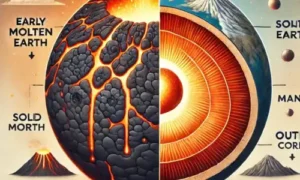
The Earth started to cool after a period of tremendous bombardment and collisions. The differentiation process that Earth went through as it cooled caused its innards to split into the mantle, crust, outer core, and inner core. Because of this layering, the Earth’s magnetic field—which is produced by the movement of molten iron and nickel in the outer core—was able to form.
To shield Earth from dangerous solar winds and cosmic radiation, this magnetic field is crucial. Earth’s atmosphere might have gradually been destroyed without this magnetic shield, rendering life as we know it impossible.
5. The Atmosphere and Ocean Formation on Earth
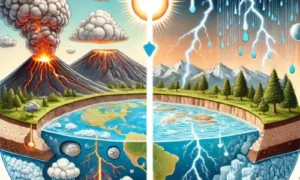
Volcanic eruptions liberated gases held in the planet’s interior, such as nitrogen, carbon dioxide, and water vapour, as the Earth’s surface cooled. The early atmosphere of Earth was created by these gases; it was dominated by volcanic gases and lacked oxygen, making it very different from the air we breathe now.
Oceans were created when the Earth’s surface cooled enough over time for water vapour to condense. Earth was also pummeled by comets and asteroids, which may have contributed to the planet’s water supply because they contained trace amounts of water. An essential element in the formation of Earth was the existence of liquid water, which produced the conditions necessary for the ultimate emergence of life.
6. The Great Oxygenation Event and the Origins of Life

The first primitive living forms, including bacteria, appeared on Earth about 3.8 billion years ago due to certain environmental factors. After thriving in the waters, these early species finally discovered a method called photosynthesis that enabled them to create energy by turning carbon dioxide and sunlight into glucose and oxygen.
These microbes started releasing oxygen as a byproduct of photosynthesis, which progressively changed the atmosphere of Earth. The Great Oxygenation Event, which occurred about 2.5 billion years ago, had a profound impact. More complex life forms that depend on oxygen, such as plants and animals, were made possible by the beginning of the accumulation of oxygen in the atmosphere.
7. Plate Tectonics and Earth’s Continents

Tectonic plates started to form and shift as Earth’s crust stabilized because of convection currents in the mantle. Geological features like mountains and volcanoes, as well as continents and ocean basins, were created as a result of these plates’ movement. Continental drift is the process by which the continents have moved and rearranged themselves over billions of years and is still going on today.
One process that is essential to life on Earth is plate tectonics. Through volcanic eruptions and subduction, it recycles carbon, controlling the planet’s temperature over extended periods. The stability of Earth’s climate has been maintained by this delicate balancing act, enabling the evolution and diversification of life.
8. The Creation of a Planet That Supports Life
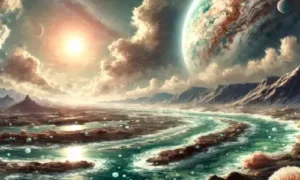
Earth changed from a molten, lifeless sphere to a thriving, life-supporting globe through a sequence of interrelated events. The ideal environment for life to thrive was produced by the creation of the atmosphere, oceans, magnetic fields, and steady climate. From tiny bacteria to sophisticated multicellular life forms like humans, Earth has supported a dynamic ecosystem for billions of years.
Because of geological, climatic, and biological processes, Earth is still a dynamic planet today. Knowing how Earth formed helps us understand how life began and what prerequisites must be met for life to exist elsewhere.
Conclusion
Earth’s origin is a story of cosmic occurrences, chemical changes, and ongoing evolution. Earth’s birth serves as a reminder of the amazing processes that mould our cosmos, from the collapse of a star nebula to the production of seas and the emergence of life.
Every stage of Earth’s history has helped create a distinct, habitable planet that is still growing and changing now. We develop a greater understanding of the complexity and wonder of our environment and the cosmos as a whole as we investigate the beginnings of Earth.






